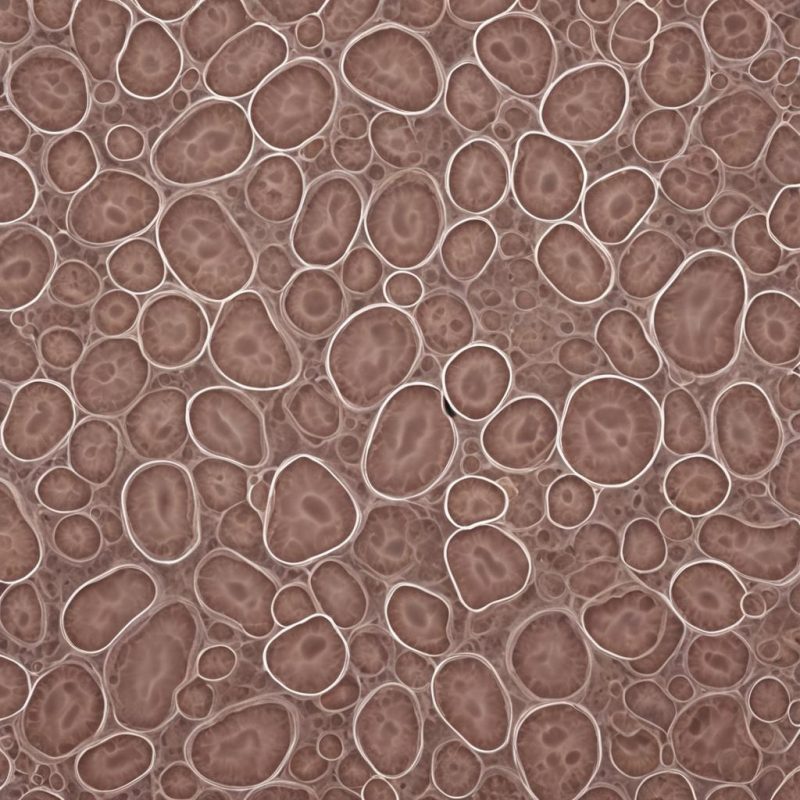By Hannah Actor-Engel, Ph.D.
Stem cells derived from the human umbilical cord have a potential for regenerative medicine that has not been fully explored. The human umbilical cord contains multipotent stem cells with the ability to integrate into diverse tissues, and this has fewer ethical concerns than traditional stem cells.1 While much of their potential still requires exploration, their ability to transfer healthy mitochondria and their resistance to oxidative stress may be at the root of their therapeutic potential.2
Mitochondrial Transfer
Mesenchymal stem cells (MSCs), a predominant form of stem cells from the human umbilical cord, have the ability to transfer their own healthy mitochondria to other cell types. MSCs can make tunneling nanotubes (TNTs) between themselves and other cells. TNTs are used to shuttle healthy mitochondria from MSCs into the surrounding cell types.3,4 Mitochondrial transfer can increase during oxidative stress.2
Mitochondrial Function
Mitochondria are essential organelles required for cellular energy production and intracellular calcium handling. Mitochondria play crucial roles in glycolysis, the Krebs cycle, and oxidative phosphorylation.5 They are the main site of adenosine triphosphate (ATP) synthesis.6 The Krebs cycle and oxidative phosphorylation occur in the matrix of the mitochondria and require a membrane potential to carry out these processes. During many disease states, such as stroke, the mitochondrial membrane potential is disturbed, both across the outer membrane to cytoplasm and the inner membrane to matrix.4
Under hypoxic conditions, the cell can produce lactic acid or ethanol instead of ATP. Certain cell types require different amounts and types of activity driven by mitochondria. MSC mitochondria can change their activity and metabolic products based on the type of cell they are integrating into.6
Evidence-Based Application
In vitro and in vivo studies have shed light on how successful integration of MSC mitochondria into other cell types can help cellular survival. MSCs can be isolated from Wharton’s jelly by LeoCorps Inc. for research and therapeutic application. They can then be cultured, delivered to tissue, or have their mitochondria isolated.7
Lungs
Mitochondrial transfer through MSC implantation has been demonstrated in the epithelial cells of the lungs in a rat model of lung disease. The transfer was demonstrated through fluorescent microscopy. The mitochondrial transfer allowed for increased energy production in the lung epithelial cells. The increased energy production was associated with improved asthma conditions in the rats.2
Eyes
In cultured corneal epithelial cells undergoing oxidative stress, MSCs were able to donate healthy mitochondria through TNTs. Transplanted MSCs also transferred mitochondria to the cornea of rabbits, which led to corneal repair that was dependent on the MSC mitochondrial activity.3
Stroke
Oxygen glucose deprivation (OGD) is a common in vitro model of ischemic stroke. During ischemic conditions, there is an increase in dysfunctional mitochondria that release pro-apoptotic factors that lead to cell death.4 Cultured MSCs that undergo OGD have increased cell survival capabilities and improved mitochondrial function.8
Cancer Treatment
Certain chemotherapy agents, such as cisplatin, can cause cell damage and death to renal cells. In a rat model of cisplatin-induced acute kidney injury, transplanted MSCs improved renal cell mitochondrial function. This ultimately led to improved renal function.9
References Saleh R, Reza HM. Short review on human umbilical cord lining epithelial cells and their potential clinical applications. Stem Cell Res Ther. 2017;8(1):222. doi:10.1186/s13287-017-0679-y Li C, Cheung MKH, Han S, et al. Mesenchymal stem cells and their mitochondrial transfer: a double-edged sword. Biosci Rep. 2019;39(5):BSR20182417. doi:10.1042/BSR20182417 Jiang D, Gao F, Zhang Y, et al. Mitochondrial transfer of mesenchymal stem cells effectively protects corneal epithelial cells from mitochondrial damage. Cell Death Dis. 2016;7(11):e2467. doi:10.1038/cddis.2016.358 Cozene BM, Russo E, Anzalone R, et al. Mitochondrial activity of human umbilical cord mesenchymal stem cells. Brain Circ. 2021;7(1):33-36. doi:10.4103/bc.bc_15_21 Osellame LD, Blacker TS, Duchen MR. Cellular and molecular mechanisms of mitochondrial function. Best Pract Res Clin Endocrinol Metab. 2012;26(6):711-723. doi:10.1016/j.beem.2012.05.003 Yan W, Diao S, Fan Z. The role and mechanism of mitochondrial functions and energy metabolism in the function regulation of the mesenchymal stem cells. Stem Cell Res Ther. 2021;12(1):140. doi:10.1186/s13287-021-02194-z Yu SH, Kim S, Kim Y, et al. Human umbilical cord mesenchymal stem cell-derived mitochondria (PN-101) attenuate LPS-induced inflammatory responses by inhibiting NFκB signaling pathway [published correction appears in BMB Rep. 2022 Jul;55(7):361]. BMB Rep. 2022;55(3):136-141. doi:10.5483/BMBRep.2022.55.3.083 Russo E, Lee JY, Nguyen H, et al. Energy metabolism analysis of three different mesenchymal stem cell populations of umbilical cord under normal and pathologic conditions. Stem Cell Rev Rep. 2020;16(3):585-595. doi:10.1007/s12015-020-09967-8 Peng X, Xu H, Zhou Y, et al. Human umbilical cord mesenchymal stem cells attenuate cisplatin-induced acute and chronic renal injury. Exp Biol Med (Maywood). 2013;238(8):960-970. doi:10.1177/1477153513497176

